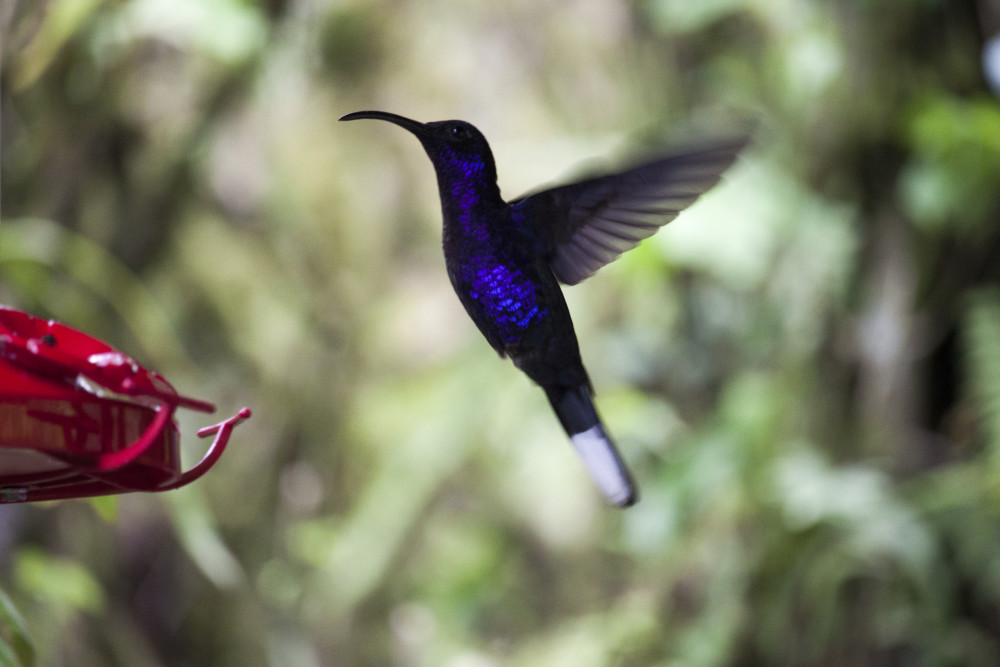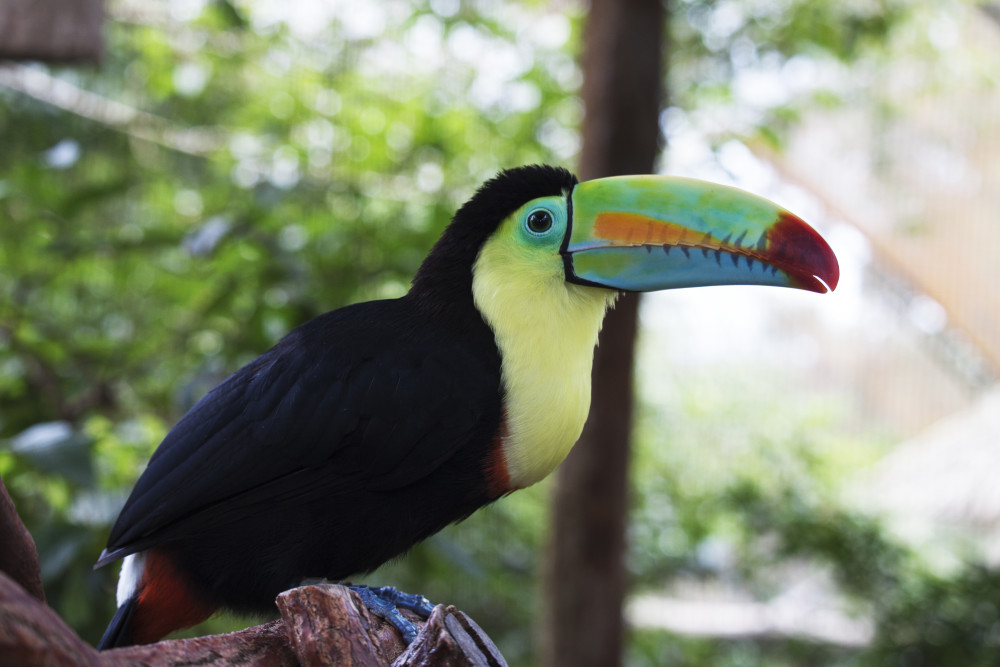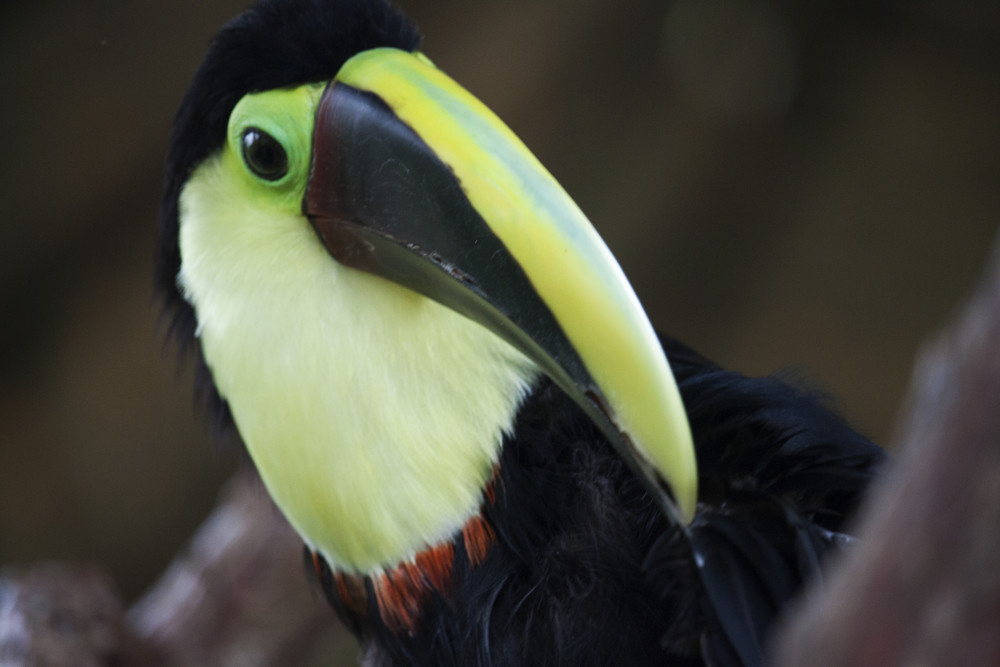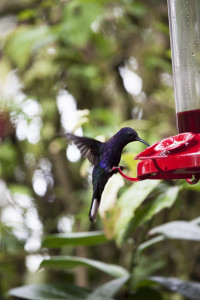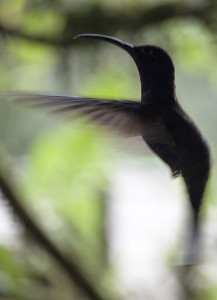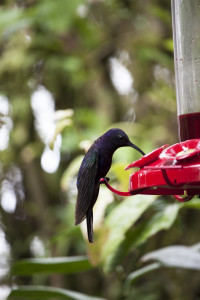“A bird in the hand is worth two in the bush,” the saying goes. That means that it’s better to keep what you have than to risk it for something greater. But when it comes to the animal kingdom, I would risk everything to watch this frolicking trio in the bush: the toucan, scarlet macaw and hummingbird. I do not want to have a single bird in hand, captive. I’d rather see them free, captivating me, with their astounding colors and plumage in one of the countries with more biodiversity in the world: Costa Rica. Here are some features and facts of these lovely and amazing birds.
There are over 10,500 bird species in the world. Costa Rica hosts more than 850 bird species. Toucans, macaws and hummingbirds inhabit its rain and cloud forests. Watching the colors, beaks and feathers of these stunning birds in Costa Rica makes you wonder how nature could create such graceful and beautiful winged creatures. But you’re glad it did, because they’re a great spectacle for your eyes.
TOUCANS: Gregarious by Nature
The keel-billed toucan is sometimes called the rainbow-billed toucan, for the progression of yellow, orange, lime and pale blue to the crimson tip of its exceptionally bright and enormous beak.
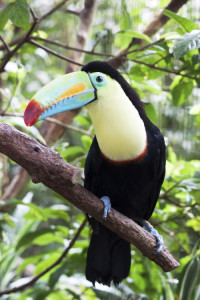
Toucan’s curved and multicolor beak is so big that it seems to outweigh its body. Surprisingly light and resilient, its massive beak severs fruit with graceful ease from the tips of the thinnest branches. The colorful bill, yellow cheeks, red bib, and bright blue legs stand in striking contrast with the rest of this otherwise dark bird.
Perhaps they have already found the most enchanting spots in the wild because toucans are not migratory. They are gregarious birds that live in pairs or in flocks of about a dozen. Their luscious days are spent in trees and feeding on fruit, eggs and a few choice creatures that whet their appetite.
Male keel-billed toucans can reach 18.5 in (47 cm) in length and a weight of 1 lb. (500 g); females are smaller, at 17 in (44 cm) and 0.8 lb. (380 g).
There exist fascinating varieties of colorful toucans. Researchers suggest that as testosterone in male birds increases, so does the level of carotenoids, the chemicals that create the bright coloring on birds feathers, beaks, and legs. Talk about pumped up color!
Toucans are native to Southern Mexico, Central America, the northern portion of South America, and the Caribbean region.
The name of this bird group is derived from the Tupi word tukana (an indigenous group in Brazil), via Portuguese.
SCARLET MACAWS: Very Smart Birds
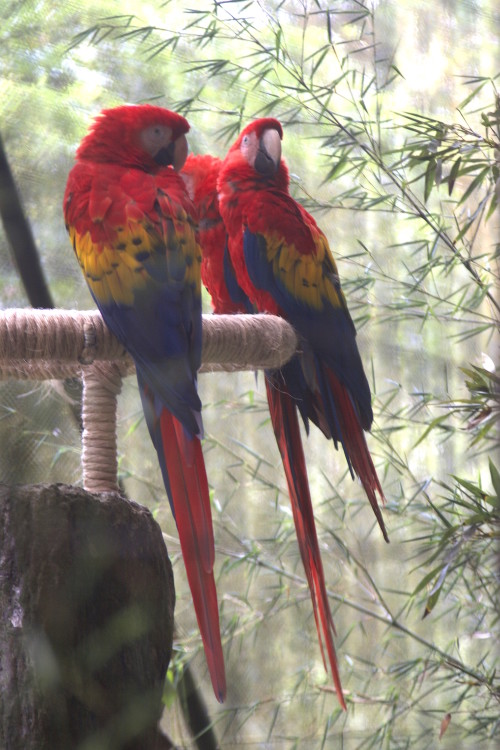
I love the scarlet macaws because they’re birds with which you can have conversations! They are prized as pets or for exhibition in zoos and amusement parks. Their popularity has arisen due to their attractive plumage and ability to learn tricks and imitate words, since they’re very smart birds.
They’re distinguished by their colorful plumage, which is drenched in scarlet red, flecked with some blue and yellow feathers in the wings and tail. They’re daytime and very sociable birds that can form flocks of several dozens that meet to find food, grooming, protect and sleep together. They can reach a size of 35 in (90 cm) in length and a weight of 2.2 lb. (1 kg).
The scarlet macaw diet consists predominately of seeds, but also eats fruits, nectar, insects or flowers, leaves and stems of certain plants. Its relationship with man is old. Mayan and Aztec civilizations strongly linked the scarlet macaw with religion, the deities of fire and sun.
This bird, often confused with the slightly larger green-winged macaw, which has more distinct red lines in the face and no yellow in the wing, can live up to 75 years in captivity, although a more typical lifespan is 40 to 50 years.
HUMMINGBIRDS: Excellent Pollinators
Hummingbirds also captivate me. They’re very small birds, but can flutter their wings at an astonishing rate, around 60-80 times per second! And up to 200 times when in courtship dives!
Female hummingbirds are usually slightly larger and weigh a little bit more than their male counterparts. They’re on average between 3 and 5 in (7.5 and 13 cm) in length. These birds are endemic to America, which has over 300 species. Costa Rica boasts about 50 species of hummingbirds, four of which are endemic to this country.
These birds hover around places where honeysuckle and other plants grow, as they feed on nectar and small insects found within flowers. They go from one plant to another, so they also contribute to pollination, like bees do.
Most hummingbirds have long, thin and straight beaks, but in some species the beak shape is adapted to a special feeding. Unlike other birds, the hummingbird has a tongue that can be bend the edges to form a tube that allows sipping nectar.
These little winged creatures have a very high metabolism. Their flight consumes a lot of energy! So they need frequent meals and spend much time resting. To save energy when food is scarce, and at night when not foraging, they go into torpor, a state similar to hibernation that slows their metabolic rate. On average, they spend 10 to 15 percent of their time feeding and 75 to 85 percent resting and digesting. Eating and resting, now that’s life!
Fruits and flowers provide birds with food but many of these plants also rely on birds. In tropical places such as Costa Rica, hundreds of bird species fill the important ecological role of dispersing fruit seeds and pollinating flowers. Thus, the conservation of large areas is very important to maintaining these species in the tropics.
During my recent visit to Costa Rica, I explored the rain and cloud forests, but wasn’t lucky enough to see any of these birds in their natural habitats. I saw them in La Paz Waterfall Gardens, a private refuge north of San Jose.
Wild animals that have been captured illegally, confiscated by the government or donated by their owners are kept in this refuge. They have lived their entire lives in captivity and could not survive in the wild by themselves.
The keel-billed toucans and scarlet macaws that I was enthralled by in Costa Rica were birds in the hand, in captivity. I deeply desire many others are in the bush, free, to preserve the vast, beautiful, useful and spectacular bird species in this country and around the world.
I thank Sunny Tiwana, a fellow traveler I met in Costa Rica, for his fantastic photos. You can see more of his travel pictures on Instagram.

